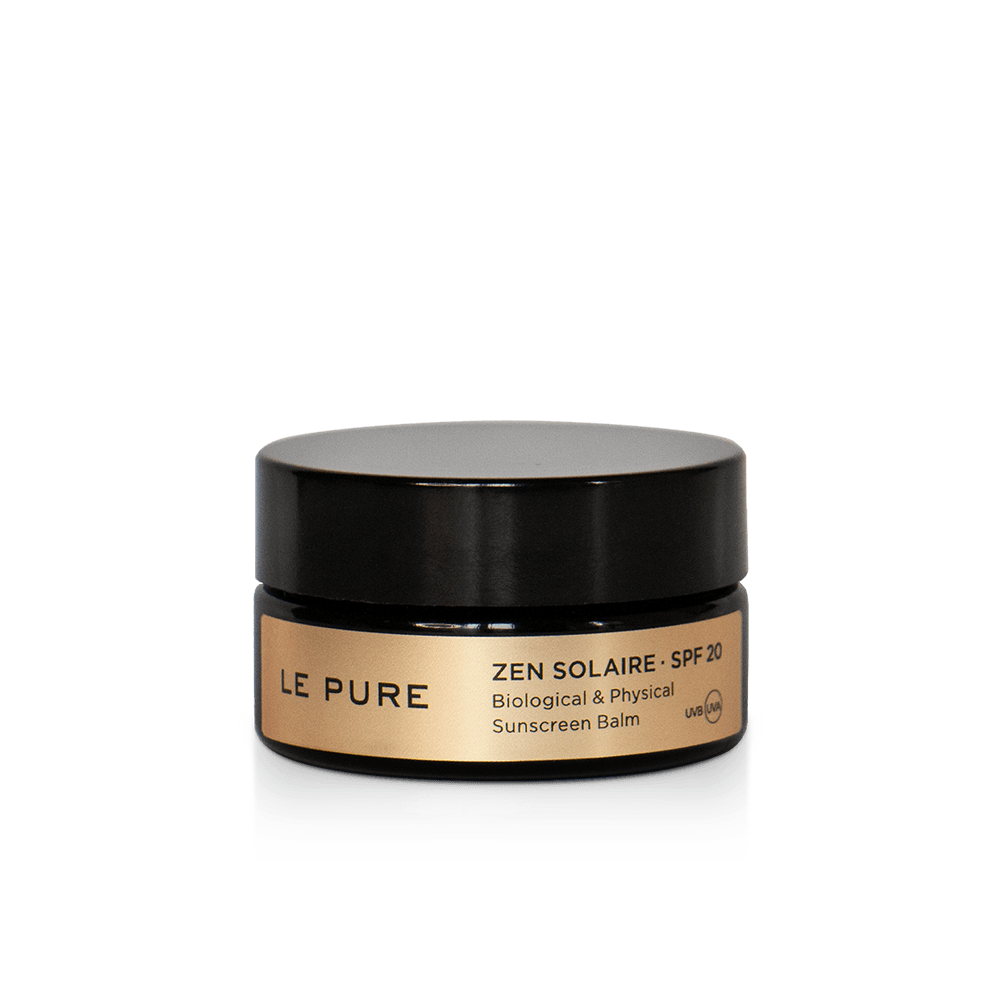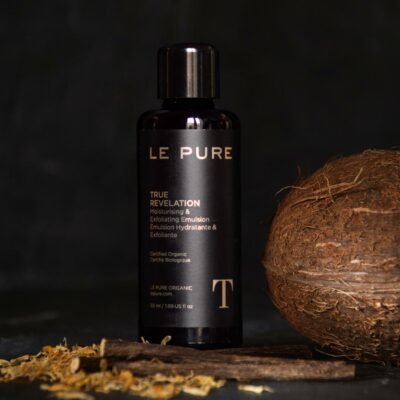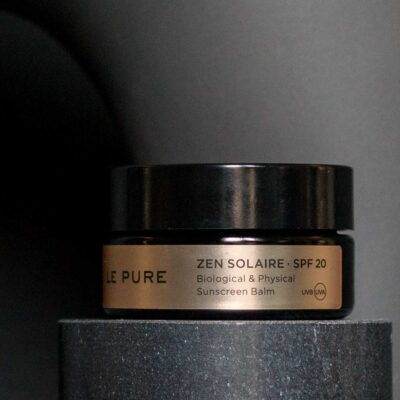How to Prepare your Skin for the Sun
In spring the days start to get longer and less cloudy, which exposes us to more ultraviolet radiation. Our body is designed to adapt to the environment as long as we respect a few fundamental facts. Skin preparation for the sun includes progressive exposure, cellular renewal and the ideal skin nutrition.
Drastic changes such as going from no sun exposure to multiple hours of sun radiation are extremely bad for the skin and can result in sunburn and excessive melanin production.
Knowing how to prepare your skin for the sun helps to prevent premature aging, we need to expose the skin gradually to the sun enabling it to increase its self-defence.

Train your Skin to Tan Safely
A sunscreen with a high SPF may seem a shortcut to allow for prolonged sun exposure right after the winter months. Yet, the reality is that such products may be able to prevent sunburn, but they cannot prevent the damage from UVA rays, if the skin is unprepared and undernourished. Therefore it is essential to train your skin to tan safely with specific nutrients, progressive sun exposure and skincare routines.
Five Essential Tips to Prepare your Skin for Tanning
The ideal steps to prepare your skin for tanning include nourishing it from the inside as well as the outside as well as following progressive sun exposure and the ideal skincare routine.
Prepare your Melanocytic Cells
Melanocytes are skin cells that produce the skin pigment melanin. Their tentacles make them look like octopuses. Progressive sun exposure and providing the skin with concentrated plant nutrients support the optimal functioning of the melanocytic cells.

The ideal balance of these cells is key to prevent the overproduction of melanin and to avoid pigment concentration in the skin (hyperpigmentation).

Progressive Sun Exposure
The different seasons of the year naturally provide us with gradual sun exposure, but our change to an indoor lifestyle makes progressive sunbathing more difficult. Often a vitamin D deficiency makes our body even hungrier for prolonged hours in the sun.
The strength of the sun is measured by the UV index, which depends on the ozone layer, latitude, season of the year, altitude, clouds and the hour of the day.
Also, the surrounding environment matters, as water, sand and snow reflect the UV rays, which can increase the amount of overall sun radiation.
The importance is to start slow and expose your skin to short periods of radiation. A few minutes per day depending on your skin type and the UV radiation. These small amounts of radiation allow the skin to build up its self-defense and to avoid an overstimulation of the melanocytic cells.
For healthy, antiaging sun protection from the outside, we need to combine physical sun protection minerals, photoprotective plant nutrients and protective clothing. There is no universal recommendation here as to how many minutes you can spend in the sun due to the many factors involved. It is essential to develop your own, personalized.
Photoprotective plant nutrients
Providing the skin with the highest quality of organic plant nutrients enables it to defend itself better against outside aggressions. Providing specific nutrients boosts the skin’s metabolism, skin regeneration and the optimal functioning of its melanocytic cells.

Plant ingredients that boost sun protection
Plants naturally develop compounds that protect them from UV radiation. By creating crude whole plant extracts we can provide the skin with these photoprotective properties. Using the totality of the plant’s nutrients we manage to preserve the positive interactions between the hundreds of individual components of the plant.
Most skincare products however use isolated constituents (vitamin C, retinol, hyaluronic acid, etc.). These isolated ingredientes however do not contain the complete nutrient profile of the plant, and are therefore less effective than crude whole plant extracts. They are also more likely to cause allergic reactions or photosensitivity.
Beta-carotene and Vitamin A (natural retinol)
Beta-carotene is also called a provitamin A, because your body can convert it into vitamin A or retinol. In the right dose beta-carotene is an ideal, natural, non-sensitising alternative to synthetic retinol, while also improving the optimal functioning of the melanocytic cells. These melanin producing cells are responsible for the pigmentation of our skin and the right balance is key to assure an even pigment distribution and to avoid dark spots.
Vitamin E, polyphenols and micronutrients
Plant extracts that provide the skin with vitamin E, vitamin A, polyphenols and micronutrients exercise repairing and regulating functions within the skin, which are essential to counteract skin aging. They also provide a certain amount of sun protection.
Cellular Regeneration and Sun Exposure
Cellular regeneration is key during the month of sun exposure as the skin works harder and the UV radiation leads to an increased keratinisation of the skin. The skin regenerates itself every 21-28 days and these cycles get longer as we age. Gentle exfoliation can speed up the regeneration cycle by removing dead skin cells and augmenting blood circulation.
True Revelation was formulated to provide the skin with the ideal skin regenerating properties and nutrients. It is a potent, multifunctional emulsion that gently exfoliates the skin with particles of the coconut shell.
The crude, whole plant extract of the Calendula flower contains high amounts of beta-carotenes, which improve the optimal functioning of the melanocytic cells. These skin nutrients are especially important before and during the first days and weeks of sun exposure. Correctly functioning melanocytic cells are responsible for even skin tone without darker spots.
Sun Preparation Treatment
After cleansing your skin, apply 2-3 x per week in the evening as an intensive treatment starting in spring. It is preferable to use a small quantity with a short extremely gentle exfoliation massage during each application. Avoid harsh rubbing and prolonged exfoliation.
We recommend a more frequent gentle exfoliation as opposed to a large quantity and prolonged massage once in a while. Be extremely gentle, because repeated strong rubbing of the skin during cleansing or exfoliation can cause or aggravate hyperpigmentation.
The gentle exfoliation should be continued during the months of sun exposure, because the sun radiation produces more keratin which hardens the skin and can cause dark spots. Therefore in the summer months, we need to stimulate the skin’s cellular rejuvenation to avoid hyperpigmentation.
If you are already suffering from hyperpigmentation and melasma, you need to be patient. It takes years until the skin produces dark spots and therefore they don’t disappear in a few weeks. Adequately nourishing and protecting the skin, as well as addressing internal causes, brings us the best long term results.
Read more about melasma and hyperpigmentation here.
Also, remember that repeated strong rubbing of the skin during cleansing or exfoliation can cause or aggravate hyperpigmentation. Follow the Antiaging Face Cleansing Ritual to avoid skin irritation and damage.

Foods that Boost Sun Protection
Foods with photoprotective nutrients support the body’s self defence abilities thanks to its therapeutic actions on the cellular level. A diet rich in antioxidants creates a protective base that acts continuously in our body.
Certain foods increase the activities of the melanocytes. Green and orange plants are especially rich in beta-carotenes. Carrots are the first vegetable that come to mind, but also watercress, pumpkins, winter squash, sweet potatoes, yams, apricots, papayas, mangos and berries are excellent sources.
Dark green leafy vegetables such as spinach, kale, mangold and broccoli also contain many beta-carotenes, as do green tea and mint. Make sure to buy high-quality, organic foods, because the beta-carotene content within fresh vegetables can vary greatly and depends on soil composition, time of year, ripeness and exposure to light and oxygen.
You should start eating this beta-carotene rich diet a few weeks before your first sun exposure and continue all summer long.
All of the above steps help to prepare your skin for the sun in a natural way.
As with nutrition, the key to long term success is a series of daily habits and high quality nutrients, which strengthen your body and your organs. When it comes to our skin and the sun, there is no quick fix. Our skin needs the right amount of daily sun exposure and high quaality nutrients to protect itself from skin damage and hyperpigmentation. A high SPF cream contains mostly water and chemically modified fats, which don’t provide your skin with the most beneficial antiaging sun protection.












